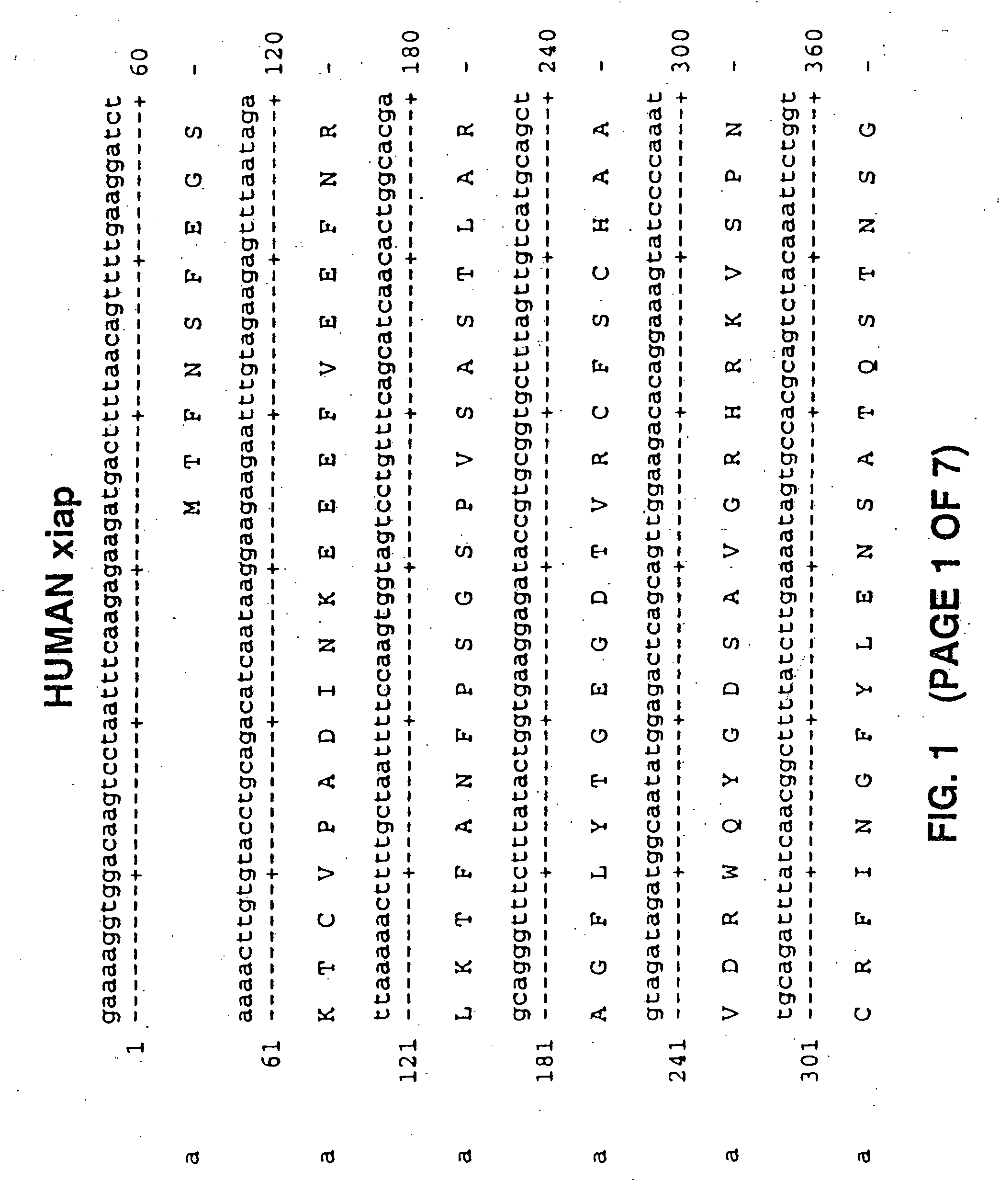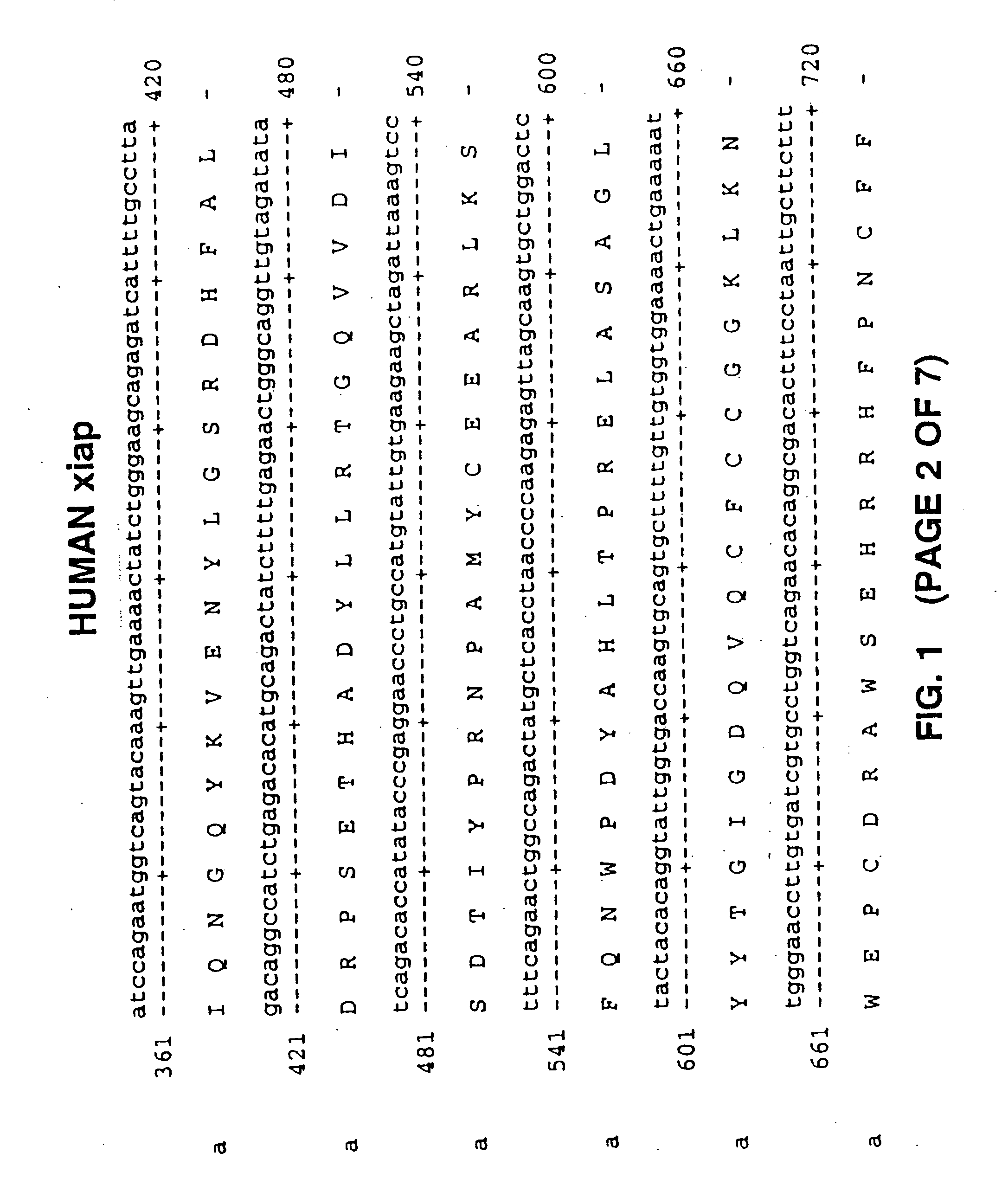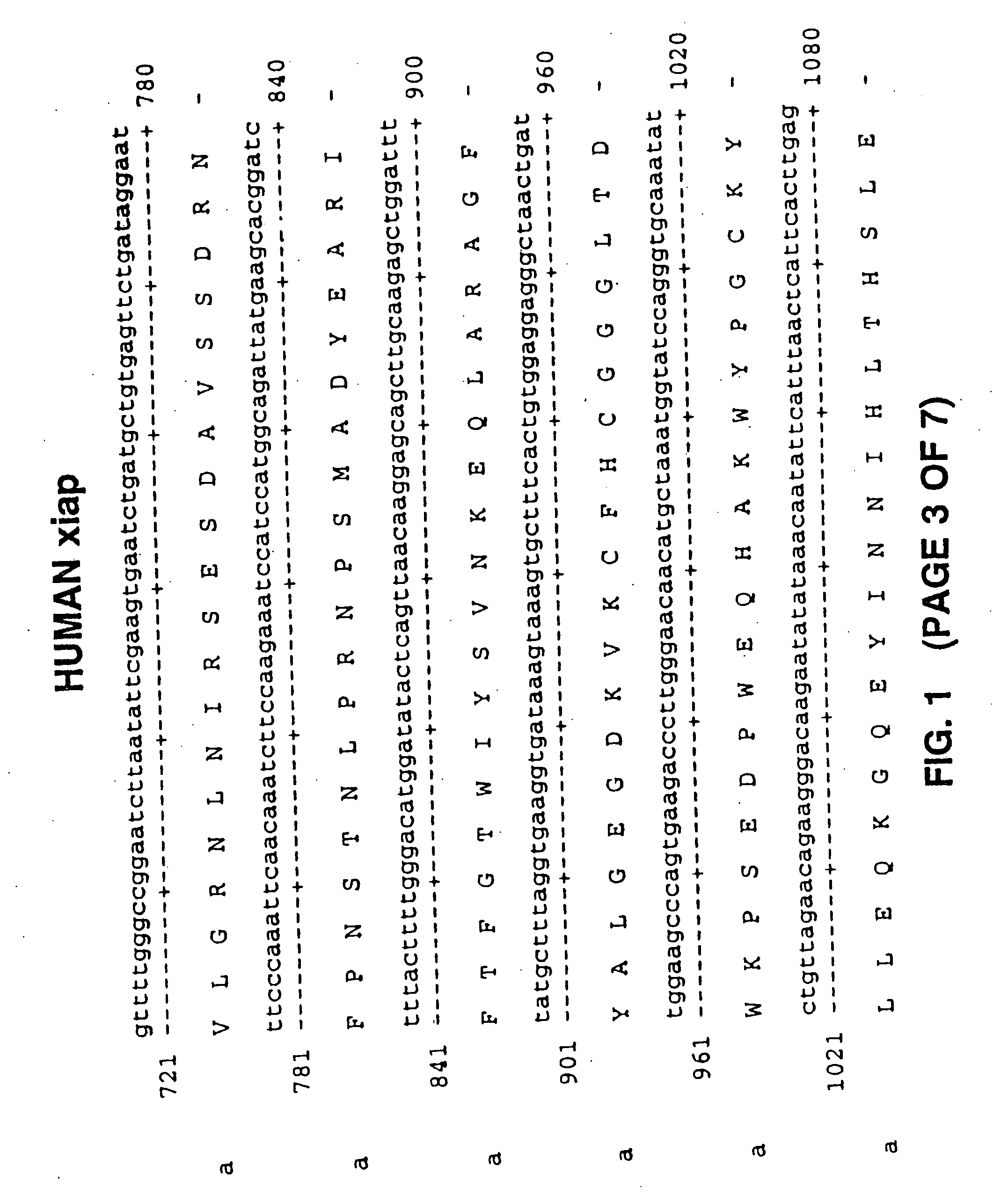Antisense IAP oligonucleotides and uses thereof
a technology of oligonucleotides and antisense, which is applied in the field of antisense iap oligonucleotides, can solve problems such as poor prognosis, and achieve the effect of facilitating production
- Summary
- Abstract
- Description
- Claims
- Application Information
AI Technical Summary
Benefits of technology
Problems solved by technology
Method used
Image
Examples
example 1
Testing of Antisense Oligonucleotides
[0095] 1. Complete panel of adenovirus constructs. The panel may consist of approximately four types of recombinant virus. A) Sense orientation viruses for each of the IAP open reading frames. These viruses are designed to massively overexpress the recombinant protein in infected cells. XIAP, HIAP1, HIAP2, and NAIP. B) Antisense orientation viruses in which the viral promoter drives the synthesis of an MRNA of opposite polarity to the iap mRNA, thereby shutting off host cell synthesis of the targeted protein coding region. XIAP, HIAP1, HIAP2, and NAIP “antisense” constructs are used for production of such antisense IAPs. C) Sub-domain expression viruses. These constructs express only a partial IAP protein in infected cells. We have data indicating that deletion of the zinc finger of XIAP renders the protein more potent in protecting cell against apoptotic triggers. This data also indicates that expression of the zinc finger alone will indicate a...
example 2
Antisense Oligonucleotide (ODN) Selection
[0103] We selected 96 and 98, mostly non-overlapping, 19-mer antisense oligonucleotide (ODN) sequences for XIAP and HIAP1, respectively, based on the selection criteria listed below. In the case of XIAP, we selected 96 sequences (each being 19 nucleobases in length) (SEQ ID NOS: 1 through 96; Table 1) from a region approximately 1 kb upstream of the start codon to approximately 1 kb downstream of the stop codon of the cDNA sequence (FIG. 15). This blanketed approximately 50% of the coding region, and immediate 5′ and 3′ UTR sequences (i.e., 96 19-mers span 1.8 kb of sequence, while the targeted region is approximately 3.5 kb in length, comprised of a coding region of 1.5 kb plus 1 kb either side of UTR sequences).
TABLE 1XIAP Antisense OligonucleotidesPositionAntisensein XIAPOligonucleotideSEQ ID NO:CodeSequenceSequence1A12AAAATTCTAAGTACCTGCA2B121TCTAGAGGGTGGCTCAGGA3C144CAGATATATATGTAACACT4D178TGAGAGCCCTTTTTTTGTT5E1110AGTATGAAATATTTCTGAT6F1...
example 3
Antisense Oligonucleotide Synthesis
[0108] The antisense oligonucleotides were synthesized by IDT (Integrated DNA Technologies, USA) as chimeric, second-generation oligonucleotides, consisting of a core of phosphodiester DNA residues flanked on either side by two 2′-O methyl RNA residues with a phosphorothioate linkage between the flanking RNA residues. The oligonucleotides were provided in a 96-well plate, as well as matching tubes, with a minimum of 12 ODs of oligo DNA, which provided ample material for transfections (greater than a hundred assays ih the 96-well format) when the detection method is a sensitive method, such as TaqMan quantitative PCR, or an ELISA. Once the positive hits were identified (see below), the antisense oligonucleotides were re-synthesized with 3, instead of 2, flanking RNA residues to further increase stability / nuclease resistance. In addition, for validation purposes, appropriate controls (such as scrambled, 4-base mismatch, and reverse polarity oligonuc...
PUM
| Property | Measurement | Unit |
|---|---|---|
| time | aaaaa | aaaaa |
| optimal time points | aaaaa | aaaaa |
| TaqMan real time PCR | aaaaa | aaaaa |
Abstract
Description
Claims
Application Information
 Login to View More
Login to View More - R&D
- Intellectual Property
- Life Sciences
- Materials
- Tech Scout
- Unparalleled Data Quality
- Higher Quality Content
- 60% Fewer Hallucinations
Browse by: Latest US Patents, China's latest patents, Technical Efficacy Thesaurus, Application Domain, Technology Topic, Popular Technical Reports.
© 2025 PatSnap. All rights reserved.Legal|Privacy policy|Modern Slavery Act Transparency Statement|Sitemap|About US| Contact US: help@patsnap.com



